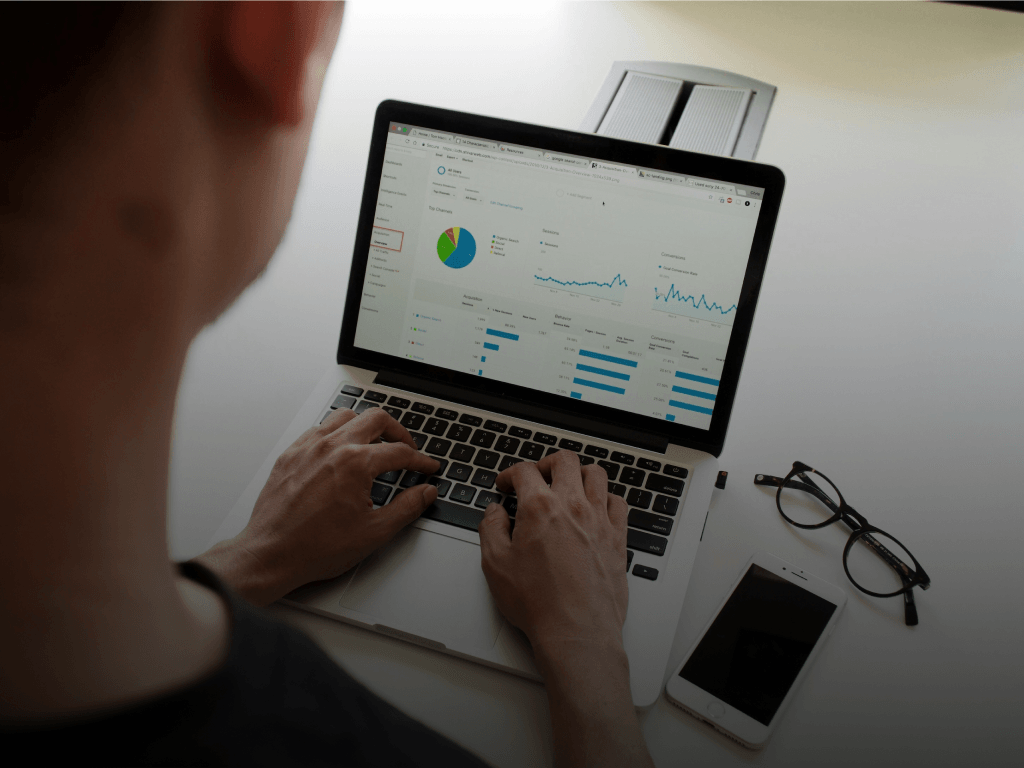How to implement healthcare data security tools to exclude breaches of more than 40 million patient records
Subscribe to our blog to receive recent updates
Technology is becoming more advanced, and digitalization is beginning to affect many social aspects of our lives, including medicine, where a big bunch of tools is becoming available every year. New technologies allow for better checkups, more accurate diagnoses, and more effective treatments. We wrote about some medical technologies based on artificial intelligence in detail in this article. New technologies in medicine make it possible to create, store and utilize disease information digitally and store it in electronic health records (EHR). This is a faster, more convenient, and more understandable way for doctors and healthcare providers to access standardized patient information.
However, electronic health records also come with many dangerous problems, since medical information is classified as sensitive, which means it is a very valuable product for attackers. According to Experian, a single electronic patient card can be worth up to $1,000 on the darknet, as it stores a large amount of personal data like date and place of birth, residential address, bank card details and more, and HealthTech estimates that the value of medical data is 3 times higher than the value of non-medical data. And while all medical information used to be recorded in a paper medical record and stored only inside the hospital in a file cabinet, nowadays an electronic medical database can be easily hacked and stolen if hospital computers have poor security features.
Healthcare providers are relying now more than ever on trusted technology to handle patient data that won't allow it to be compromised. In this article, we'll take a closer look at the legal and technological regulations for protecting information, what problems arise with healthcare data security, and what you need to do to reduce the risks of patient data being compromised. Spoiler: it is not only about the development of hospital IT infrastructure, but also about the skills and knowledge of medical staff about information security.
About data security in healthcare
There is much to be said about information security and data security in particular, but in short, data security is about creating measures that aim to protect sensitive data from unauthorized access and interference. The more secure the data, the better, but it is also important that the developed tools should also be user-friendly.Healthcare data security standards and legal aspects
Data security in healthcare is highly regulated in the US and Europe, and these laws strictly define what data must be protected and in what ways it must be protected.In the US, data security is governed by several laws, and the most basic is the Health Insurance Portability and Accountability Act of 1996 (HIPAA), which includes privacy rules and security regulations. This act sets national healthcare data security standards for protecting patients' personal information and their medical records, which may be strengthened or further regulated by each state's internal regulations. According to Becker's Hospital research, confidential information is defined as:
- Patient's name;
- Date of birth, death, admission and discharge from hospital;
- Contact information: phone numbers and e-mail;
- Residential address;
- Insurance information;
- Electronic medical records, including graphic records;
- Biometric data: fingerprints, retinal scans, voice recordings;
- Other identification documents: passport, driver's license and so on.
Security rules require healthcare data security companies to organize proper data protection at the physical and software level, and there are requirements and guidelines for security management and troubleshooting.
In Europe the requirements for data security in healthcare are more strict than in the US, perhaps even the toughest in the world. Medical data protection in the European Union has been regulated by the European Union’s Data Protection Directive 95/46/EC of 24 October 1995, which states that medical data may only be collected and processed lawfully, only under strict security requirements, and only for specified purposes. Organizations are responsible for the data collected, and they must also comply with several important principles that relate to the following aspects:
- Protection of fundamental human rights, including the protection of personal data.
- Data collection and processing must be transparent.
- It is essential to be notified in the event of data leaks.
- The ability of access, editing, deletion and blocking of data.
- Penalty, including criminal penalties, for serious violations.
It is important to understand how US healthcare data security regulations differ from European ones. These regulations differ in their approach to information protection. In Europe, legislation is developed in a coordinated manner by all European countries in the form of common standards for all industries at once, which are then transformed into laws for each individual country. In the US, regulations work differently because there are no uniform data protection laws, but rather regulations are developed for each individual industry. Some states have multiple privacy laws, but it is still not centralized as in Europe.
Despite differences in the principles of personal data protection regulations, all countries are making efforts to build a robust infrastructure, and there are several important reasons for this, which we discuss below.
The importance of data security in healthcare
It is obvious that any organization that stores valuable information is vulnerable to malicious attacks, but the risks are unusually high for healthcare organizations, and there are several reasons for the importance of data security in healthcare:- Patient data contains a lot of valuable sensitive information: personal information, payment and insurance information, and more. Therefore, as we wrote above, its value on the darkweb can be several times higher than any other information.
- Medicine is developing very rapidly, especially digital technologies in this industry. However, medical data stores are nothing special in terms of healthcare data security, and yet they store a lot of valuable information that attracts a large number of attackers.
- Medical personnel work with patient data mostly remotely, which means they may receive it via unprotected wireless network protocols.
- Moreover, medical personnel are highly overworked as they handle a large number of patients and as a result, data security is not a priority for doctors and nurses.
Multiple technical and human reasons make the healthcare industry can cause a lot of healthcare data security challenges which we describe in the next section.
Healthcare data security challenges
When the question of protecting medical data comes up, the first thing to deal with is the reasons why vulnerabilities may occur in the system. Healthcare organizations are at great risk because their data is very valuable to attackers. We will list some of the healthcare data security challenges that can create problems when dealing with patient data.Using an outdated system and infrastructure
Many medical systems run on old hardware and outdated software that may no longer be supported by the developer, causing data security issues in healthcare. In order to minimize risks, you should only use modern hardware and fresh and regularly updated software.Malware attack via email
Sending viruses and malware through emails is one of the most popular ways to attack devices. It is getting more advanced every year and the emails are indistinguishable from real emails, i.e. from a real and verified sender. Such malicious emails can contain malicious scripts and programs that give access to sensitive information to attackers.Data leakage by dishonest employees
Healthcare organizations employ a huge number of people, and some employees and vendors may steal and sell certain medical data for personal reasons. Therefore, the more employees have access to sensitive data, the more chances of data breach.Unsecure network infrastructure and weak passwords
Most healthcare organizations work with wireless devices, which means they use wireless network protocols. On the one hand this is a convenient way to get patient data from any part of the hospital, but on the other hand such network connections may not be safe for data security. Moreover, weak passwords used by employees can be a threat to the security of personal data. Therefore, all network connections should be well secured and all employee accounts should have a strong password that is difficult to pick.Staff who are not trained in digital security rules
Medical data can be stolen not only through malware, but also due to the carelessness of inexperienced and untrained employees. They may breach security protocols or fail to complete work on their devices, which can be taken advantage of by attackers to steal medical data. Therefore, it is important that employees know how to properly use technology and equipment to follow security protocols, and it is also important to regularly review employees' knowledge of information security.Ways to protect medical data
There are many tools, guidelines, and security protocols for protecting health data, and the mix will depend on what kind of data you collect and how you store it. For example, some data, such as patient insurance information or records of medical exams, is not needed by all employees of a healthcare facility. Of course, the following methods do not provide a 100% guarantee of full protection of medical data, and healthcare organizations need to choose a combination of tools depending on their activities and needs, but they significantly improve the security of data storage and use. Among the most popular methods of information protection are the following:Encrypting medical data
Any sensitive information, regardless of the industry in which it is used, must be encoded with strong protocols and have strong encryption keys. Data encryption arguably imposes the highest level of security and should therefore be used to protect sensitive information.Using antivirus technology solutions
Patient data stores must be securely protected against viruses, ransomware, and other threats from malware. This is achieved by utilizing comprehensive antivirus solutions and updating them regularly. This way the system remains safe even for the most advanced viruses and threats.System monitoring
When using systems with important data that can be stolen, it is important to monitor all the activities that have taken place in it. There are several solutions that can record who has accessed, added, modified, moved and deleted data, and if suspicious activities are detected, such as unauthorized individuals obtaining information or employees who should not be in possession of such information, management will be alerted.Multi-factor authentication and additional verification
Using complex passwords is an important part of securing medical data systems, but they are difficult for ordinary employees to use. This is where additional steps in identity authentication come into play, for example, receiving a verification code via email or SMS to an employee's device directly seriously increases the resilience of the system and as a result prevents valuable information from being compromised.The zero-trust principle is also a good thing to implement. It states that all data, connections and other interactions that occur internally and externally within an organization must be validated, after which new information is fed into the system and new accounts are granted access.
Training employees on the information security basics
Employee negligence can destroy all the layers of protection for medical systems, so employees need to know how to properly use the systems to protect data and prevent data breaches.Our experience in developing healthcare data security solutions
Our team has a lot of experience in creating medical applications. For example, we worked on a healthcare application that allowed users to enter information about their own well-being and, as a result, generate reports that allow doctors to see symptoms of illness and make decisions about prescribing treatment.We redesigned the application infrastructure in the form of microservices built on a new framework, Symfony, which is considered one of the most secure solutions currently available. Implementing the product in the form of microservices is also considered to be an efficient solution that allows you to work on different parts of the product independently, while keeping the application available to users.
We have also adapted all processes in the product to the US and Canadian legal requirements of HIPAA and PIPEDA respectively. This is an important step for all applications that have to provide data security healthcare. After all these changes the application also became faster, code quality increased significantly, and marketing campaigns attracted 15,000 new users over the past year.
Conclusion
Developers of healthcare data security companies follow a vast array of requirements that ensure the safe and uninterrupted operation of hospitals and clinics. This is outlined in both basic data security requirements and regulatory laws, which policy makers continue to develop and adapt to the current level of technology. However, it's not only developers who need to keep an eye on security, but also healthcare organization leaders: it's important to provide regular training to employees, and oversight to ensure that sensitive and confidential information is not stolen by attackers.We hope that this article helps you understand the current regulations for healthcare data security and what tools can be used to increase the system's resilience to hacker threats. If you have an idea to create a healthcare product, but you have problems with its implementation and you ask a lot of questions, then fill out the form on our website, and we will quickly contact you and answer all your questions and give some hints on creating a data security healthcare app.


